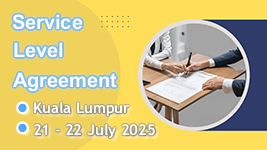PSC12
- Other
- courses : Jul 2013, Purchasing & Supply Chain Management
SpareParts & Warehouse Design
Code : PSC12
Date : 1 – 2 July 2013
Venue : Singapore
![]()
The Course
This course will focus on addressing the issues related to the Warehouse design and Spare Part Optimisation. The investment in MRO items in capital intensive industries may exceed the amount of finished goods inventory. When comparing MRO to the finished goods, it is clear that it requires new, innovative approaches in order to optimise this type of inventory. However, knowledge of MRO’s (Maintenance, Repair and Operations or Overhaul) items is critical for the effective operations in capital intensive industries. When designing a new warehouse, it is essential to take an integrative approach to the process. Merely replicating an existing process will not provide significant benefits.
The Goals
In this seminar you will therefore learn how to:
- Understand the role and importance of MRO inventory in achieving business results
- To approach the warehouse design process in a new, innovative way
- Understand the advantages/disadvantages of each design option
- Effectively provide a support structure to the warehouse
- Use the best-of-breed approach to the information management in the warehouse
The Delegates
This course is designed to provide new insights to those involved with spare part warehouse design including warehouse managers, material planners, procurement, engineers, end-users, logistics or finance personnel.
The Process
An experienced tutor with loads of practical experience in the field using interactive discussion and involvement of the delegates. There will be lots of war stories and practical examples with plenty of exercises. Throughout the course, best practice examples will be provided.
The Benefits
- To understand the contribution a spare part warehouse can make to the general operations of a company
- To make a significant contribution towards the design and implementation of a spare parts warehouse
- Provide insight to the alternatives available when designing a warehouse
- Relate to warehouse design and information requirements
The Results
- To be able to see the replenishment of MRO items as part of a fully functional system
- To determine the optimal design for a spare part warehouse
- To identify and select the most appropriate storage method
- To identify and select the most appropriate materials handling system
- To provide for support services
- To integrate the physical design with information requirements
The Programme Content
Day One
Designing the Spare Part Supply Chain
- Defining the requirements for a spare part Supply Chain
- What to keep in mind when designing a spare parts warehouse
- Three approaches to warehouse design
- Strategic warehouse decisions
- Determining the warehouse location
- Warehouse design considerations
Warehouse Building Design
- Warehouse Building design types
- Ambient
- Cold storage
- Heated storage
- Humidity
- Light
- Yard storage
- Wall, roof & flooring
- Power, water, lighting requirements
- Surrounding facility requirements
- Access
- Safety, fire protection & security requirements
Warehouse Layout
- Dedicated layout
- Random layout
- Hybrid layout
- Bin locations and numbering
- Aisle width and head space considerations
Storage methods
- Bulk storage
- Tanks & Cylinders
- Silos
- Dangerous goods
Unit storage
- Shelving & Racking
- Small Part Storage
- Storage of tools and equipment
- Obsolete items
Materials handling
- Manual
- Mechanised
- Semi-automated
- Automated
Day 2
Reverse Logistics
- Return of goods from customers
- Return of goods to suppliers
- Handling empty containers
- Obsolete items
Supporting functions in the warehouse
- Receiving
- Dispatch
- Quarantine area
- Packing, marking and preservation
- Material handling storage and service areas
- Test & repair facilities
- Administration
Information System Requirements
- Demand management
- Independent Demand Management Techniques
- Reservations
- Dependent Demand Management Techniques using MRP
- Using Bill-of-Materials
- Inventory classification techniques
- Optimisation techniques
- Inventory Implementation Issues
- Lean Inventory Management
- Root causes of Inventory problems
- Ensuring Inventory Accuracy
- Performing a System Audit
- Inventory Management KPIs
Tags: Jul 2013, Purchasing & Supply Chain Management, Singapore





